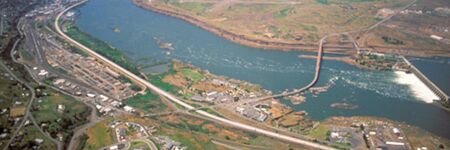The Dalles OR
- Members
The Dalles formally the City of The Dalles and also called Dalles City, is an inland port and the largest city in Wasco County, Oregon, United States. The population was 16,010 at the 2020 census, and it is the largest city in Oregon along the Columbia River outside the Portland Metropolitan Area. The Dalles is 75 miles (121 km) east of Portland, within the Columbia River Gorge National Scenic Area.
Activities

|
Direct Air Capture Plant in Oregon | |
| 280 Earth, Inc. has launched its inaugural Direct Air Capture (DAC) facility in The Dalles, Oregon, marking a significant milestone in the fight against climate change. | ||
Details
History
The area around The Dalles is known to have been a trading center for Native Americans as long as 10,000 years ago and is thus one of the oldest inhabited places in North America.
The site of what is now the city of The Dalles was a major Native American trading center. The general area is one of the continent's most significant archaeological regions. Lewis and Clark camped near Mill Creek on October 25–27, 1805, and recorded the Indian name for the creek as Quenett.

